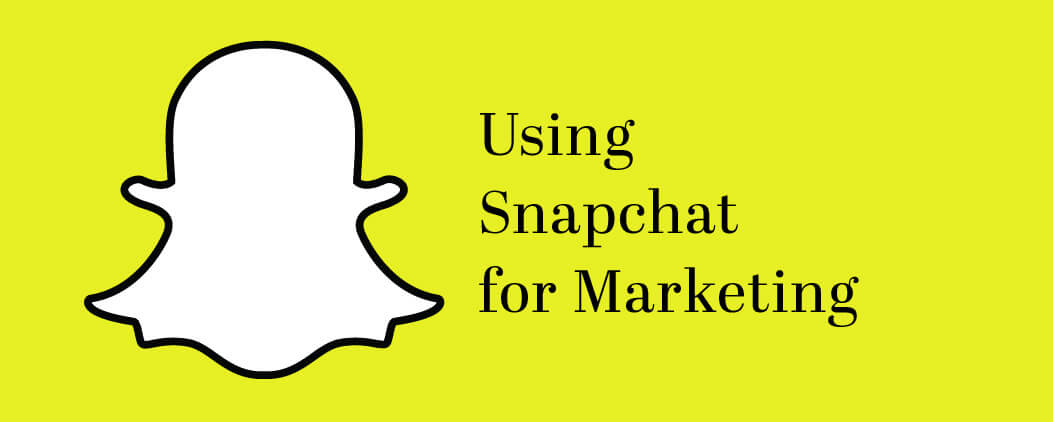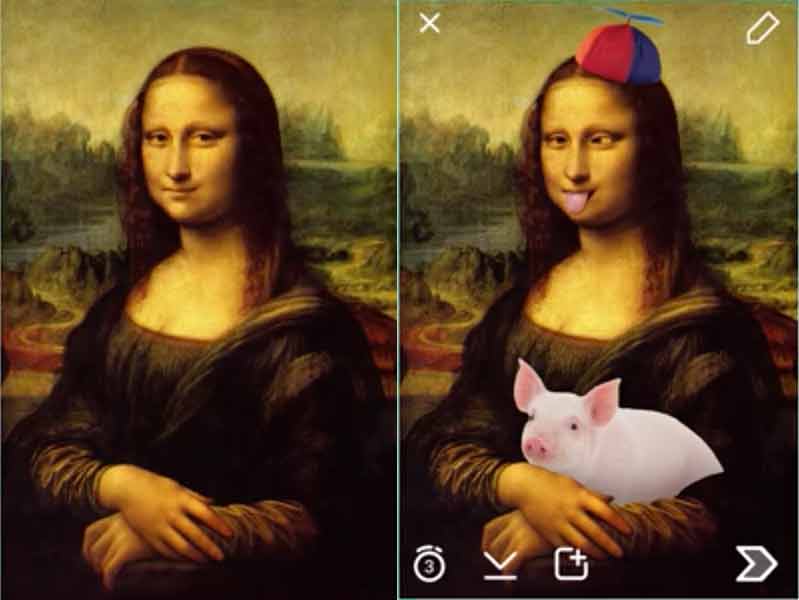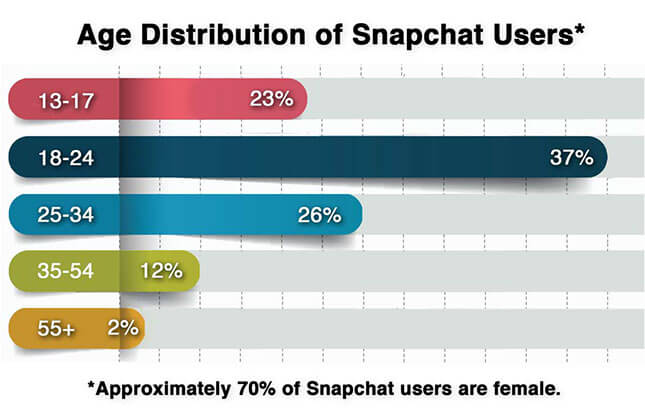
Is using Snapchat for marketing really a viable option for today’s businesses?
If you are around teenagers or young adults, you’ve probably heard of Snapchat. My daughter uses it and it is her primary vehicle for communication with her friends and peer group. While I personally hate that app, the teenagers are eating it up and consuming more pictures and messages than we adults can fathom.
This means B2C marketers have to at least consider the social media platform for marketing to certain target markets.
Snapchat’s History
Snapchat was created in 2011 as messaging service for private phone-to-phone communication. It was the brainchild of three college students as a way to share funny photos and awkward selfies with friends and lovers. A hallmark feature of Snapchat was that photos, messages and videos would disappear almost immediately after being read, so students didn’t have to worry about future bosses and future boyfriends or girlfriends ever seeing what had been sent.
During its first year, the founders of Snapchat noticed that usage was peaking between the hours of 9 am to 3 pm. As they explored why, they discovered that high school students were using Snapchat as a way to pass images and “notes” in class behind their teachers backs. Since the notes were on phones instead of paper and they disappeared the moment they were read, they could never fall on the floor where teachers could find them—as had been the case for the past two hundred years.
High school students also flocked to the idea that they could send almost anything they wanted to friends and not have to worry that anyone else would see it.
You might wonder what’s the big deal with an app that about a 1,000 high school students were using? But less than three years later, Mark Zuckerberg offered $3 billion to buy Snapchat. It is now valued at $20 billion.
Some Interesting Stats About Snapchat
- Average number of shared posts per second: 9,000
- Number of Snapchat Stories that are viewed every day: 1 billion
- Number of Snapchat daily video views: 10 billion
- Number of Snapchat daily active users: 100 million
- Percentage of Snapchat daily users who add content: 60%
- Percentage of high school Class of 2015 who use Snapchat: 60%
- Percentage of college students who use Snapchat: 70%
- Percentage of male college students who share selfies on Snapchat every day: 50%
- Percentage of female college students who share selfies on Snapchat every day: 70%
- Percentage of Snapchat users who purchase products online: 76%
Why Snapchat is So Popular with Teens
In 2012, Snapchat was given a boost by the media’s panic about teenagers using it as a sexting tool. The media completely missed the main reasons why teens and young adults loved Snapchat, which had little to do with sexting.
Snapchat was fun to use. It was the perfect vehicle for the spontaneous and un-filtered way that many teens and young adults think and process information. Snapchat was designed to be used on phones instead of laptops and desktops which is how teens and young adults communicate and share information.
The most addictive and endearing part of Snapchat is that’s fun and silly. Here are some examples of the many lenses and filters that Snapchat is famous for:

Mona Lisa Before and After Snapchat

Some of the Snapchat lenses and filters that users can apply to their selfies and send to friends in seconds.

Taco Bell received 224 million views in one day with this Snapchat filter, which users could superimpose over their own selfies and send to friends. It shows the power of Snapchat for marketing purposes.
Snapchat for Marketing and Business
Unlike other messaging apps, Snapchat has no social data, no lists of friends that others can easily see, and user profiles are extremely limited and not made public. This is the polar opposite of Facebook, where you worry about the number of followers, likes, and comments. On Snapchat, no one knows or cares.
While this might make for a great user experience, it’s been nothing short of a nightmare for using Snapchat for marketing. Snapchat’s lack of keywords, SEO, analytics and all things Google has made it almost impossible for advertisers.
But that is rapidly changing.
During the past twelve months, Snapchat has repositioned itself from a no-man’s land for marketers to welcoming marketers with open arms. The reason for this is monetization. Without making changes in the way Snapchat is used, and without offering features that will catch the eye of marketers, there has been no way for Snapchat’s investors to make money.
So with each new update of Snapchat—which seem to be happening every four to eight weeks—Snapchat is adding new user features that are more marketing friendly.
Since the beginning of 2016:
- Twelve months ago Snapchat was working with only one company to provide data for advertisers. Snapchat is now working with ten data measurement companies to help provide needed analytics to its advertisers.
- Snapchat is now collaborating with Neilson and its Nielsen Digital Ad Ratings to measure the audiences of Snapchat’s new 3V ads on mobile devices.
- Snapchat has teamed up with Moat, which provides “real-time, multi-platform, and actionable marketing analytics” to help marketers better understand their campaigns’ effectiveness.
- Snapchat is now utilizing Google’s DoubleClick to help provide advertisers with data.
- On Facebook, the default setting on audio for video ads is OFF. It’s the opposite on Snapchat. So while advertisers have been told by Facebook to make video ads with no sound, Snapchat is touting its ability to have video ads with sound.
- Snapchat recently hired MediaScience to measure emotional responses, eye-tracking, visual attention and purchase intent of people watching its video ads versus ads on Facebook, Instagram, YouTube and TV. Ever so predictably, ads on Snapchat turned out to be more effective those of the competition.
The challenge for Snapchat has been in deciding what changes to make that work well for marketers without destroying its unique ecosystem that has made it so wildly popular with teens and young adults.
Snapchat Demographics
Here’s a look at the demographics of Snapchat’s 100+ million users. If you are considering using Snapchat for marketing to consumers between the ages of 13 and 30, the social media platform is definitely worth considering.

Is Snapchat Right for You?
Snapchat isn’t for everyone and all types of businesses. In a follow up post, I’ll talk more about using Snapchat for marketing and how and even if you should include it in your future campaigns.
Web Savvy Marketing
TwitterYoutubeFacebookLinkedinGoogle +